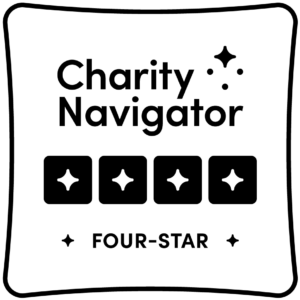It’s funny how the lessons we learn while young tend to grow more meaningful and nuanced as we move about the world. Here’s an odd tale about how crashing my motorcycle as a kid came to define how I think about climate change today.
It was a snowy morning in March. I was riding my motorcycle (very unwisely) up the mountain road to my glamorous job as a dishwasher at a third-rate ski resort. There was a lot for me to manage mentally to keep the motorcycle upright: my hands were cold; my gloves were frozen; the roads had patches of ice; I was shivering; and other cars were traveling the mountain road with me.
Blatant stupidity aside, I was doing pretty well. I was managing many variables in a tense situation and … then the dog.
A barking basset-hound beagle shar-pei-looking blur of fur came charging toward me out of a driveway. I panicked. I focused on the dog. I unconsciously turned right into it.
This was my first experience with target fixation.
I had heard about it during every American teenager’s right-of-passage, called Driver’s Ed. But, at the time, I didn’t listen.
Target fixation is a phenomenon in which panicking drivers will actually turn into the oncoming threat—the truck, the deer, the dog—as opposed to swerving out of the way. The normal human brain can juggle only a few (maybe 3? maybe 4?) variables at one time, and the panicking human brain (without training) can only hold one.
With training, however, humans can build contingency plans for dealing with target fixation. For example, my thought process on the morning I hit the dog went very simply like this: “Dog! I’m going to hit the dog!” My brain panicked. All other thoughts went out of my head. I saw no other options in the moment…and I turned into the dog.
In retrospect, had I been anticipating my doggie gauntlet I could have spent the morning preparing my mind: “If I see a dog, I will swerve away. Dog. Swerve. Dog. Swerve.”
Then, when I was confronted with the dog, my first panicked thought—just due to mental muscle memory—would have been “Swerve.” Not, of course, “Oh God I’m going to hit a dog. It’s an unavoidable eventuality. I might as well get this over with because there’s no other possible outcome. Oh %$&k.”
That was a long, and hopefully entertaining, way to make a point about the impending climate crisis and the associated fallout: climate refugees, food scarcity, species extinction, and so on. It’s all very scary. And society at large is fixated on it—with newscasts, doomsday movies, apocalyptic TV shows. We’re staring at the global catastrophe and we’re turning right into it.
But, as all of you know, that’s not our only option. We can swerve.
As holistic managers (and ecosystem regeneration geeks), I believe we have a unique opportunity to show the world what a “swerve” looks like—to demonstrate our work and prove that a world rooted in regeneration is possible. I find the skeptics sniffing around Holistic Management to be a GOOD thing for the world, since their skepticism fades when they see it working firsthand. When they come to know that regeneration is possible, we’ve changed their knee-jerk reaction to climate change from “it’s the end of the world” to “time to choose an abundant future.”
I believe the Savory Global Network is best poised to spread this message of hope. With Hubs demonstrating and facilitating grassland regeneration all around the planet, we can and should invite the world in to see what it looks like to swerve.
At Studio Hill, the Savory Hub in Vermont, we host schools and groups and teach classes. But our most successful enterprise at influencing people’s vision of the future has been our farm stays program.
People come from all over the world—most knowing nothing of Holistic Management or regenerative agriculture. But once the guests have come and seen our landscape and see how we are managing it, they understand that the end of the world is not our only option. They feel hopeful. They feel renewed. And then they often tell their friends to come and see what they’ve just witnessed.
There are a few other Savory Hubs offering hospitality programs for guests to come visit their operations – the Africa Centre for Holistic Management in Zimbabwe, the Mara Training Centre in Kenya, and White Oak Pastures in Georgia, USA come to mind – but I hope even more Savory Hubs will someday offer some sort of farm/Hub stay hospitality program in an interconnected global web of collaboration and support—to support each Hub’s region economically (which has been awesome for us), but also to open the world’s eyes to this critically important work and a new way forward.
Oh… and the dog’s name was Jack. He recovered well and lived to a ripe old age.


